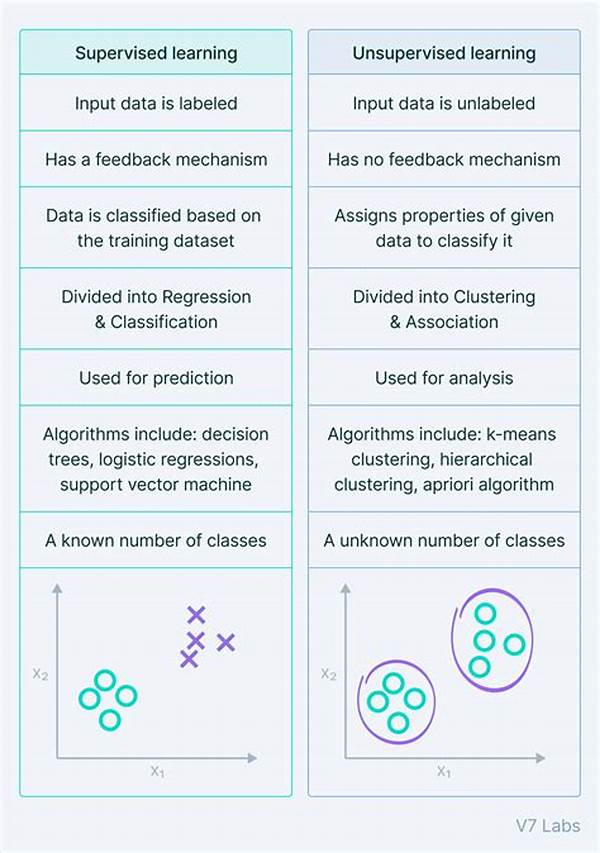Hey there, fellow tech enthusiasts! If you’ve ever found yourself tangled in the web of machine learning jargon, you’re not alone. Today, let’s unravel the mystery and explore the difference between supervised and unsupervised learning. You might have stumbled upon these terms while diving into the vast ocean of AI, and let’s face it, they can be quite confusing. But don’t fret, I’ve got your back as we break down these concepts in a way that’s easier than pie.
Supervised vs. Unsupervised Learning: The Basics
So, what’s the difference between supervised and unsupervised learning? Picture yourself as a teacher in a classroom. In supervised learning, the model is just like a student who needs guidance, where you provide labeled examples to learn from. It’s like teaching a child with picture books — they have the labels right there to understand what’s what. On the other hand, unsupervised learning is like letting that child explore the world without guidance, figuring things out by themselves without any labeled examples. It’s about the model trying to make sense of patterns and structures hidden within the data without explicit instructions. This is where the magic happens — the difference between supervised and unsupervised learning is the presence or absence of these guiding labels.
Key Differences Explained
1. Guidance Required: The primary difference between supervised and unsupervised learning lies in whether guidance is provided. Supervised involves labeled data, while unsupervised explores the unknown.
2. Purpose: Think about goals. Supervised learning predicts outcomes based on training data. Unsupervised simply explores and uncovers hidden patterns.
3. Complexity Level: Supervised learning can be more straightforward due to labeled data, whereas unsupervised learning can get complex without predefined labels.
4. Application Types: Supervised learning is often used for tasks like classification and regression. Unsupervised learning is ideal for clustering and association.
5. Outcome Certainty: Supervised learning provides specific predictions; unsupervised offers insight but no definite answers.
Why Does It Matter?
Understanding the difference between supervised and unsupervised learning is key for anyone looking to dive deeper into the world of machine learning. Supervised learning is your pal when you have a well-defined problem with lots of labeled data available. You can train your algorithms to predict outcomes, making it a favorite choice for businesses looking to optimize processes. On the flip side, unsupervised learning comes in handy when you’re exploring the unknown. Need to segment a market? Analyze customer behavior without labels? This is where unsupervised shines, helping you uncover patterns you never knew existed.
Bridging the Gap with Examples
1. A common difference between supervised and unsupervised learning is found in their uses. While supervised learning focuses on prediction, unsupervised learning centers on discovering hidden structures within data.
2. Imagine teaching a model with images of cats and dogs. Supervised learning thrives here; it knows what cats and dogs look like through labels.
3. Unsupervised methods, however, require the model to identify inherent structures, much like a curious kid arranging a puzzle with no picture on the box.
4. One intriguing application exhibiting the difference between supervised and unsupervised learning is differentiating spam from non-spam emails versus discovering clusters of similar users in social media.
5. Supervised learning can tell you the ‘what’ and ‘when’ of events, while unsupervised focuses more on the ‘why’ and ‘how.’
When To Choose What?
Navigating the difference between supervised and unsupervised learning is crucial when selecting the right approach. Choose supervised learning if your dataset is labeled and you want precise predictions. For instance, when you have medical data with given conditions and need predictive diagnostics. Conversely, opt for unsupervised learning when you venture into exploring data dynamics with unknown relationships, like diving into customer segmentation. It’s about choosing the right tool for the right situation! The beauty lies in how these methodologies unravel the mysteries of data, each with its own unique charm.
Recap and Wrap-Up
Alright, we’ve meandered through the difference between supervised and unsupervised learning. While one is all about having guidance with labeled data, the other embraces the chaos and learns from uncharted territories. Whether you’re classifying emails or deciphering market segments, knowing which type of learning to use can be a real game-changer. If you’re about making solid predictions, supervised might be your ticket. If discovering hidden patterns is your game, unsupervised learning is where you want to be. So, next time you’re faced with tons of data, think about what you aim to achieve, and choose your learning path accordingly.
Summary
In a nutshell, the difference between supervised and unsupervised learning boils down to the presence or absence of labeled data. It’s like coaching a guided missile aimed at a target versus letting a drone map uncharted territory. Supervised learning is about using labeled data to make predictions; it’s systematically aiming at known targets. Unsupervised learning, however, is the adventurous voyage of discovery without predefined boundaries. It’s about the thrill of uncovering patterns that were hidden from sight. Both methods bring distinct flavors and potential to the table, giving you the power of choice in the bustling world of data science. So, embrace these differences with open arms as you continue your journey in the realm of machine learning!

